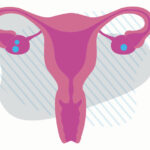Feeding and growth difficulties in children: When to refer

Parents are bombarded with so much online information about the best ways to feed their children the nutrients they need to ensure they grow to the best of their potential. As we know, not everything they read is helpful or even accurate.
The best thing you can do for your patient families is regularly plot their child along the chart at every appointment and encourage them to ask you questions.
Growth charts: The importance of evaluating all three curves
First off, make sure you plot against the proper growth charts. Generally, the WHO charts are used for children less than 2 years of age, and the CDC charts for children 2 years of age and above. This is due to the different populations used in creating the charts; the WHO charts reflect breastfed population compared to the CDC infant charts.
There are also disease specific charts, such as those for trisomy 21, which should be used for children diagnosed with those conditions, as these children may not grow the same way as the populations used to create the WHO and CDC charts.
Be sure to look at all three growth curves: weight, length, and weight-for-length (or weight, height, and BMI for an older child). The weight-for-length is sometimes overlooked, and it is often the key to deciphering changes in growth patterns.
Growth concerns
If your patient families express concern over their child’s growth curves, remind them that variability within the growth curves is not unusual, and crossing a percentile may be normal. There’s a delicate interpretation between what is normal variability in growth and what needs medical attention.
In young children, growth concerns can be difficult to diagnose and treat, and are often multifactorial in nature. When an issue does arise, pediatricians are quite savvy about when to refer to our Growth and Nutrition Program. In this program we work collaboratively with community pediatricians to evaluate and treat children with poor growth. Below are important topics to consider when evaluating patients for feeding and growth difficulties.
Small babies
Small-for-gestational-age (SGA) newborns or babies with intrauterine growth restriction (IUGR), by definition, started below the growth chart from birth, so they may need more calories early on to achieve catch-up growth. These babies will often catch up quickly with increased calorie intake, but if they are not, that should prompt a referral to a dietitian or our program.
Stunting
When a child’s weight drops in percentiles and then a few months later their height drops in percentiles, the reason is likely due to inadequate caloric intake. It’s critical that a pediatrician make a referral as soon as they notice an issue so we can work with the family to increase their child’s calorie intake and avoid further complications.
Short stature
If a child is short but a perfectly appropriate weight for their height or length, it doesn’t necessarily mean there’s a nutrition problem. It could be a constitutional growth delay that we’d just observe carefully over time. Or it could be a normal height for the child given the height of the parents.
Endocrine problem
If you see a child’s weight and height fall off at the same time and the weight-for-length remain normal, this is when we might get worried that there’s a problem with the child’s height or length. This would be more indicative of a growth hormone or other hormonal problem, in which case we would work closely with our colleagues in the Division of Endocrinology to develop a comprehensive care plan for the child.
Poor weight gain
We divide reasons for poor weight gain into four categories:
- food insecurity
- inadequate caloric intake (such as grazing)
- increased metabolic rate (such as congenital heart disease)
- malabsorption (such as IBD or celiac disease)
Most of our patients fall into the second category — inadequate intake — and we work with them on the factors that may be contributing to the issue, which may include diet, behavior, and challenges with feeding and swallowing. In patients, an underlying medical condition such as eosinophilic esophagitis, is identified as a contributor to the patient’s feeding problem, which we can treat in conjunction with the other factors.
If you suspect an issue, we are always happy to look at your patient’s charts and determine if it warrants a referral, and if so, how urgently.
Learn more about our Growth and Nutrition Program or call 617-355-7713 to refer a patient.
Meet our experts:
Sarah Fleet, MD, is an attending physician in the Division of Gastroenterology, Hepatology and Nutrition at Boston Children’s Hospital and a hepatology and nutrition instructor of pediatrics at Harvard Medical School.
Carolyn Lubenow, MA, CCC-SLP, is a speech language pathologist in the Department of Otolaryngology and Communication Enhancement at Boston Children’s Hospital.
Katherine Truscott, RD, LDN, CLC, is a clinical nutrition specialist II in the Division of Gastroenterology, Hepatology and Nutrition at Boston Children’s Hospital.
Related Posts :
-

An unbreakable bond: Brothers turn medical complexities into superpowers
“Look! Is that one JetBlue? I think that one’s Delta!” Running through the grass, climbing on the jungle gym, ...
-

Team spirit: How working with an allergy psychologist got Amber back to cheering
A bubbly high schooler with lots of friends and a passion for competitive cheerleading: On the surface, Amber’s life ...
-

New genetic insights could change how we treat, and talk about, polycystic ovary syndrome
Polycystic ovary syndrome (PCOS) has long been viewed as a hormonal disorder affecting women of reproductive age. However, ongoing research ...
-

Thanks to Carter and his family, people are talking about spastic paraplegia
Nine-year-old Carter may be the most devoted — and popular — sports fan in his Connecticut town. “He loves all sports,” ...





